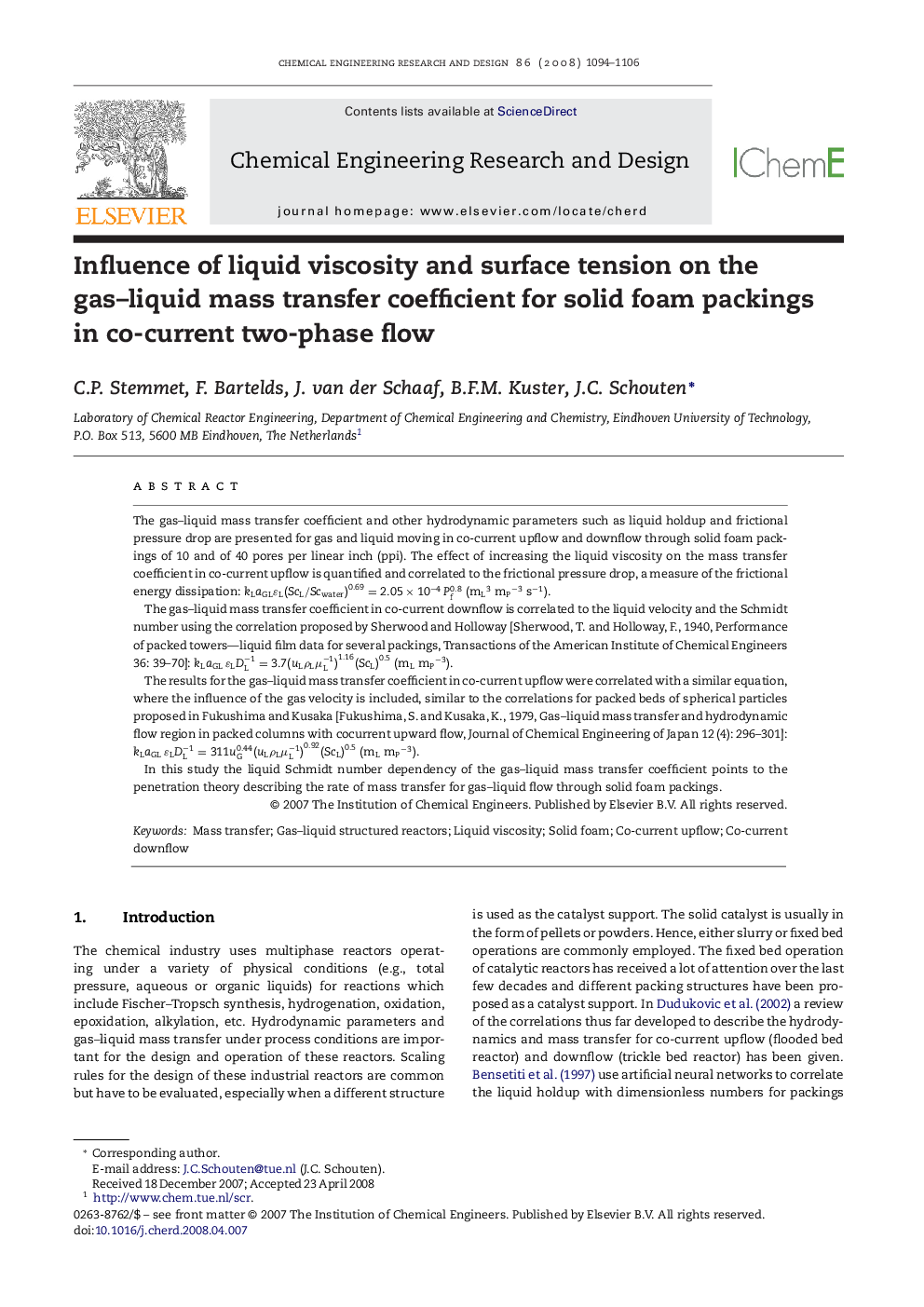| Article ID | Journal | Published Year | Pages | File Type |
|---|---|---|---|---|
| 622312 | Chemical Engineering Research and Design | 2008 | 13 Pages |
The gas–liquid mass transfer coefficient and other hydrodynamic parameters such as liquid holdup and frictional pressure drop are presented for gas and liquid moving in co-current upflow and downflow through solid foam packings of 10 and of 40 pores per linear inch (ppi). The effect of increasing the liquid viscosity on the mass transfer coefficient in co-current upflow is quantified and correlated to the frictional pressure drop, a measure of the frictional energy dissipation: kLaGLɛL(ScL/Scwater)0.69=2.05×10−4Pf0.8 (mL3 mP−3 s−1).The gas–liquid mass transfer coefficient in co-current downflow is correlated to the liquid velocity and the Schmidt number using the correlation proposed by Sherwood and Holloway [Sherwood, T. and Holloway, F., 1940, Performance of packed towers—liquid film data for several packings, Transactions of the American Institute of Chemical Engineers 36: 39–70]: kLaGLɛLDL−1=3.7(uLρLμL−1)1.16(ScL)0.5 (mL mP−3).The results for the gas–liquid mass transfer coefficient in co-current upflow were correlated with a similar equation, where the influence of the gas velocity is included, similar to the correlations for packed beds of spherical particles proposed in Fukushima and Kusaka [Fukushima, S. and Kusaka, K., 1979, Gas–liquid mass transfer and hydrodynamic flow region in packed columns with cocurrent upward flow, Journal of Chemical Engineering of Japan 12 (4): 296–301]: kLaGLɛLDL−1=311uG0.44(uLρLμL−1)0.92(ScL)0.5 (mL mP−3).In this study the liquid Schmidt number dependency of the gas–liquid mass transfer coefficient points to the penetration theory describing the rate of mass transfer for gas–liquid flow through solid foam packings.
